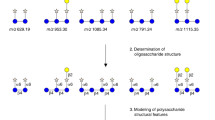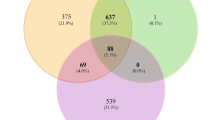Abstract
SEIBERT and her colleagues1, and other workers, found that the polysaccharide content of serum rises above the normal in certain pathological conditions, including tuberculosis and carcinoma, and it was suggested1 that this increase is associated with tissue destruction. In view of the possibility that the carbohydrate was derived from nucleic acid, Seibert et al.2 applied to serum the tryptophane – perchloric acid reaction of Cohen3, when they found a significant increase in the reaction in cases of tuberculosis and several types of carcinoma. The nature of the reacting substance is unknown; but Seibert et al. have produced evidence suggesting that it is derived from proteins. Presumably an increased reaction may also be regarded as being associated with tissue destruction.
This is a preview of subscription content, access via your institution
Access options
Subscribe to this journal
Receive 51 print issues and online access
$199.00 per year
only $3.90 per issue
Buy this article
- Purchase on Springer Link
- Instant access to full article PDF
Prices may be subject to local taxes which are calculated during checkout
Similar content being viewed by others
References
Seibert, F. B., Seibert, M. V., Atno, A. J., and Campbell, H. W., J. Clin. Invest., 26, 90 (1947).
Seibert, F. B., Pfaff, M. L., and Seibert, M. V., Arch. Biochem., 18, 279 (1948).
Cohen, S. S., J. Biol. Chem., 156, 691 1944).
Perlmann, G. E., Glenn, W. W. L., and Kaufman, D., J. Clin. Invest., 22, 627 (1943). Chanutin, A., and Gjessing, E. C., J. Biol. Chem., 165, 421 (1946).
Author information
Authors and Affiliations
Rights and permissions
About this article
Cite this article
KEYSER, J. Serum Tryptophane–Perchloric Acid Reaction as a Measure of Tissue Destruction. Nature 164, 889–890 (1949). https://doi.org/10.1038/164889b0
Issue Date:
DOI: https://doi.org/10.1038/164889b0
Comments
By submitting a comment you agree to abide by our Terms and Community Guidelines. If you find something abusive or that does not comply with our terms or guidelines please flag it as inappropriate.



